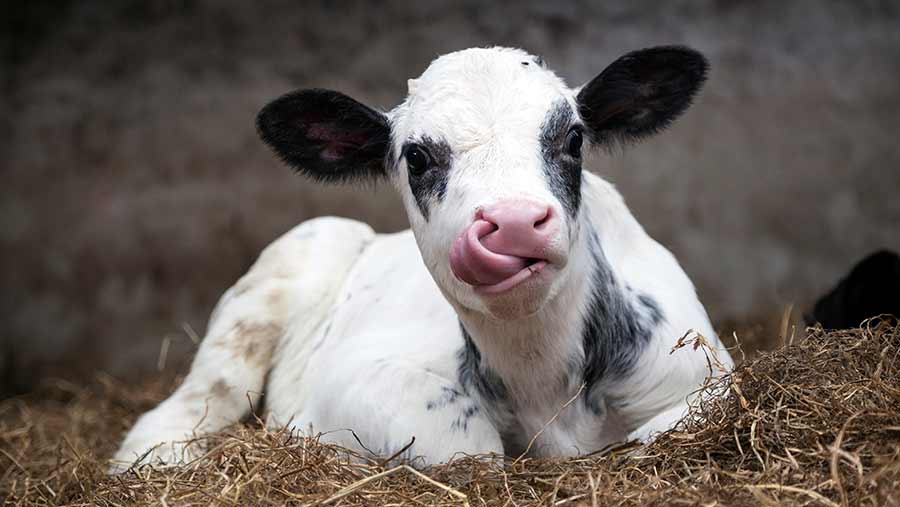Rearing calves £40-£50 dearer as confidence grows
 © Ahavelaar/Adobe Stock
© Ahavelaar/Adobe Stock A better-looking farming picture means young rearing calves are in greater demand this autumn than last, coaxing higher bids from dealers and growing units.
Last autumn’s rising costs and forage concerns led to a poor calf trade, particularly for anything second choice and small, but auctioneers say buyers have returned to the ring.
Cereal prices have eased and forage availability is much improved, although milk powder costs remain a concern at £2,400-£3,000/t for higher specification products.
Some farms have reported powder prices are back slightly on the year, with one source citing a 20-25% decrease in price.
See also: Firmer finished beef values drive strong suckled calf trade
Feed wheat (ex-farm) is £80-£100/t cheaper than a year ago and has sat at £170-£180/t for the past few weeks.
Calves up this year
Averages are far from record highs, and back £20-£30 a head on the spring of 2021, but are £20-£25 dearer than the drought-hit trade of autumn 2022, when three-week-old continental bull calf averages slumped to £115 and heifers to £84.
Latest AHDB averages put these calves at about £180 and £120, respectively, which auctioneer Kyle Hawksworth of Craven Cattle Marts says is a year-on-year increase reflected at Skipton.
“Calves generally drop off at this time of year, but they have stayed up so far,” he told Farmers Weekly.
“Fewer farms in this area have suckler cows, so calf rearing is increasingly important, and now that corn is back and there is more forage around, it has helped trade.”
He said numbers were on the increase as autumn calving started, and best continental cross bulls had made £400-£480 at one moth old, with second-choice types sold for £300 or more at the same age.
Continental heifers had hit £350-£420 at four to six weeks old, and second-choice animals made £280-£350.
£5/kg beef price
Processor base quotes for beef cattle have held firm at the £5/kg mark for the past two months, which has lifted calves, stirks and stores in the live ring.
Trade sources believe Christmas demand should firm clean cattle prices in the coming weeks, which suggests youngstock values will stay supported.
Irish cattle slaughter remains lower – 4% back on the year up to 22 October. However, the price has failed to lift since falling 40-50p/kg from May highs, meaning the price continues to sit about 80p/kg behind the UK market.
